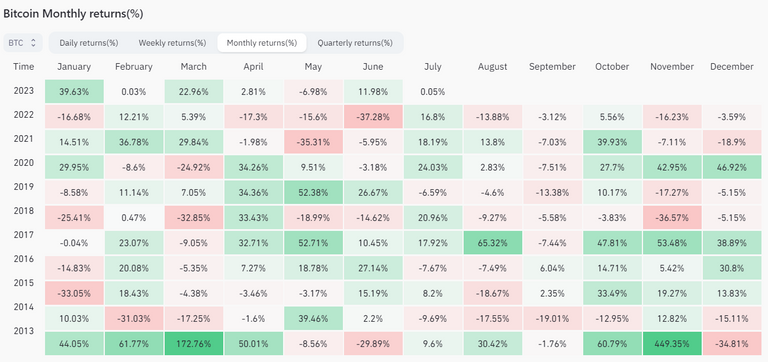As the world experiences an unprecedented surge in the evolution of digital assets, Bitcoin (BTC), the pioneer of cryptocurrencies, has been a focal point of study. This post explores the multifaceted aspects of Bitcoin's stability at the $30,000 mark. Given its volatility since inception, a seemingly stable phase has important implications for investors, regulators, and financial markets at large. It does not differ crypto from its native volatility and this is this aspect that interlaced crypto with the financial world.
To begin with, we delve into the underlying cause of Bitcoin's ostensible stability. The key lies within the inherent technology - blockchain, a decentralized, transparent ledger system. This technology has powered Bitcoin and created a fervent global audience, contributing to its overall market influence. Bitcoin's primary value proposition - decentralization - has cultivated a unique trust among its users, solidifying its standing as a valuable asset.
Subsequently, the maturity of the cryptocurrency market has played a crucial role in this stabilization. The adoption of Bitcoin as an alternative asset class by institutional investors has lent a degree of credibility and stability to its price. Moreover, these investors typically pursue a long-term investment strategy, effectively reducing the short-term volatility associated with Bitcoin. The entry of traditional finance players into the crypto market has also contributed to Bitcoin holding the $30,000 value.
The supply and demand dynamics also influence Bitcoin's price stability. The built-in scarcity of Bitcoin – only 21 million will ever exist – has created a deflationary effect. As more individuals and institutions embrace cryptocurrencies, the demand for Bitcoin surges. With supply capped and demand rising, the price tends to stabilize or increase, contributing to the observed price stability.
While Bitcoin's stability at $30,000 showcases market maturity and institutional acceptance, it also raises concerns. Bitcoin's market behavior exhibits elements of a speculative bubble. Its value is largely driven by speculative demand rather than its utility as a medium of exchange or store of value. If the speculators' optimism falters, Bitcoin could face a severe price correction. Many institutions commence to accept that risk. It is manageable when you are in the inside by controlling a part of the situation. The value crypto holds today has a lot to do about the holders.
Furthermore, the regulatory environment continues to pose challenges. Governments and central banks around the world have shown a varied response to Bitcoin, ranging from embracing it to outright banning it. As Bitcoin's popularity grows, its regulatory landscape becomes even more critical. The uncertainty surrounding this landscape can significantly impact Bitcoin's price stability.
The growing interest in Bitcoin from the technology sector is also pivotal. Companies like Tesla have embraced Bitcoin, accepting it as payment and investing in it as an asset. This involvement of influential technology companies has brought additional visibility to Bitcoin, helping it sustain the $30,000 value. However, it also introduces another variable into the price equation, making Bitcoin susceptible to company-specific news and sentiments.
Looking at the bright side, the stabilization of #Bitcoin at $30,000 can be attributed to a combination of factors - maturation of the cryptocurrency market, institutional adoption, supply and demand dynamics, and increased interest from the technology sector. However, the speculative nature of Bitcoin and an uncertain regulatory landscape continue to present potential risks. As the world treads into this unchartered financial territory, the need for comprehensive understanding, informed regulatory policies, and cautious optimism is more vital than ever. Bitcoin's journey at the $30,000 mark is a key chapter in the wider narrative of the digital assets' evolution, offering invaluable lessons to investors, regulators, and economists.
It is a wait and see with #ETF coming for good this time. The next step could be $40k/BTC. By the end of the year with #ETF on the radar we can see a positive crypto market where BTC is leading the way and all altcoins will follow close. While the price is a factor, it is a set point we all can agree to appreciate and see another horizon.




